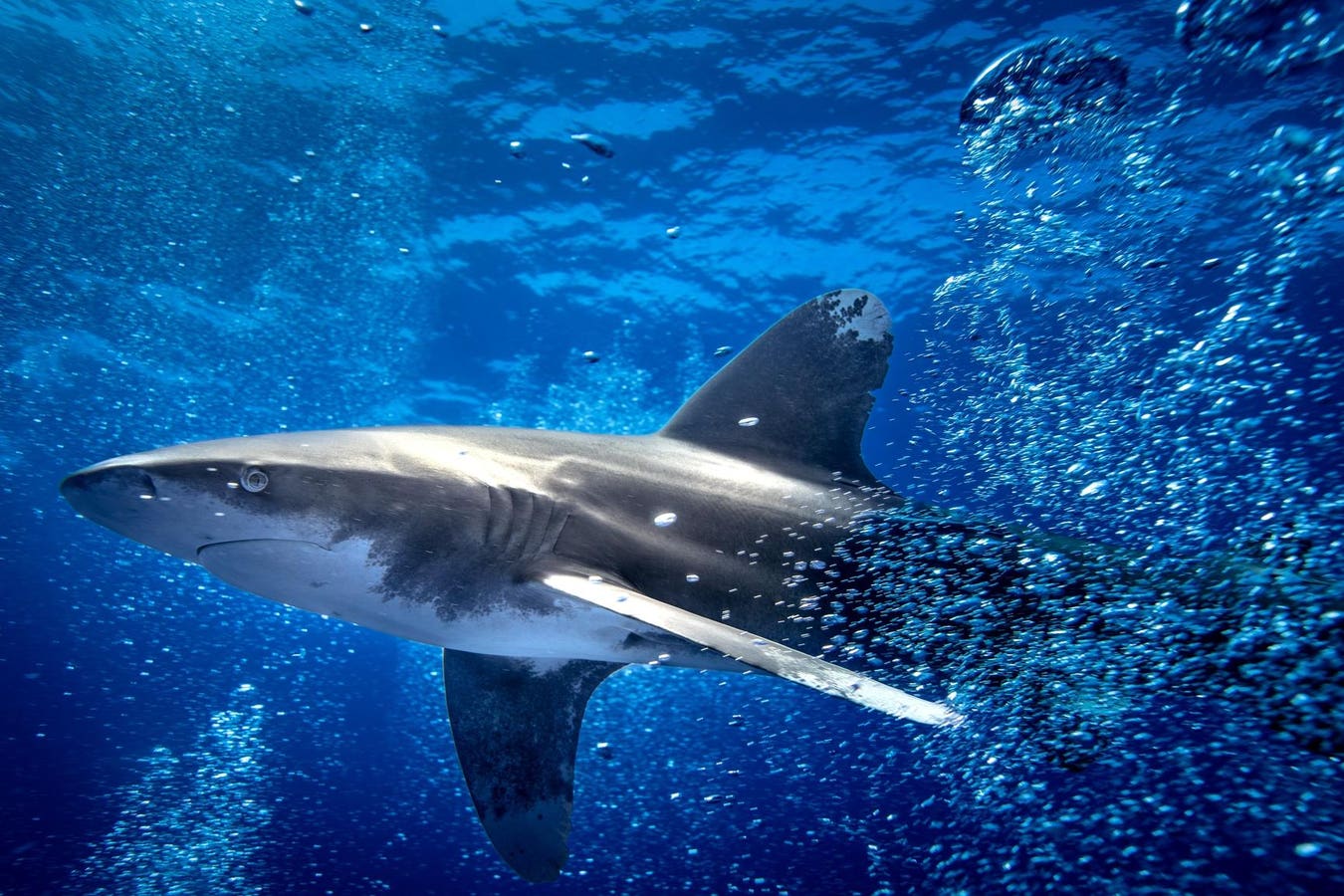Delta’s shark-skin-coated planes are a promising step toward greener air travel. But they also offer … More
Nature has always been a quiet inventor. From Velcro inspired by burrs to bullet trains shaped by kingfisher beaks, the natural world often holds solutions to human challenges. One of the latest innovations comes from an unlikely source: shark skin. Delta Air Lines has joined forces with Australian company MicroTau to test a “shark skin” coating on some of its Boeing 767 aircraft, aiming to reduce drag and improve fuel efficiency by up to 4%. That might sound like a small number, but across an entire fleet, it translates to significant reductions in emissions and fuel costs, and potentially millions in savings.
At first glance, a shark’s skin looks smooth. But zoom in with a microscope and you’ll find that shark skin is actually covered in tiny, overlapping scales called dermal denticles, which are more like miniature teeth than traditional fish scales. Made of dentin (yes, the same hard material found in our teeth), these structures form a rough surface that channels water more efficiently along a shark’s body. They’re not all the same, either! The shape, size and arrangement of denticles vary not just between shark species but even across different parts of the same shark’s body. On the snout or leading edges of fins, denticles tend to be more ridged or pointed — streamlining the flow of water where drag would otherwise be highest. Closer to the tail or belly, they may be flatter or broader, helping to manage flow separation or protect against abrasion. Some fast-swimming sharks, like the shortfin mako or the great white, have extremely narrow, streamlined denticles that reduce drag and even prevent the buildup of biofouling (e.g., things like algae and barnacles that slow marine animals down). Other species, like benthic (bottom-dwelling) sharks, have rougher or more robust denticles designed to resist wear as the shark brushes along the sea floor. Denticle density also changes — some species pack more into areas where water resistance is strongest, almost like flexible chainmail armor that’s optimized for flow.
This natural engineering, honed over hundreds of millions of years, is the reason sharks are among the most efficient swimmers in the ocean. And it’s precisely why human engineers are eager to replicate their design. That same principle is now being used by engineers at Delta’s Sustainable Skies Lab, who are testing this technology by placing microscopic grooves — nicknamed “riblets” — onto the fuselage of planes. Just like real dermal denticles, these riblets guide airflow in a way that minimizes turbulence and resistance. Beyond riblets, the airline is also experimenting with finlets — small devices modeled after fish fins — on the backs of some of its 737s; these add-ons are designed to subtly change airflow in a way that reduces drag even further.
It’s a clear example of biomimicry, where designs from nature are used to solve human problems. The possibilities are exciting, but they also raise a bigger question: what happens if we lose the very animals we’re learning from?
The natural engineering of sharks, honed over hundreds of millions of years, is the reason why they … More
Sharks, like many marine species, are facing a cascade of human-made threats. Overfishing, bycatch, habitat destruction and climate change have caused major declines in global shark populations. Many species are now endangered or critically endangered. And while the ecological impacts of their disappearance have been well documented—from collapsing food webs to imbalanced ecosystems—there’s another consequence that often gets overlooked: the loss of nature’s blueprints for innovation.
If shark populations continue to plummet, we risk losing access to some of the most efficient biological designs on the planet. That means less opportunity to observe, study and replicate what millions of years of evolution have fine-tuned. Biomimicry relies on living models, and once those are gone, we can’t get them back. The idea that a disappearing species could hold the key to future technology may sound dramatic, but it’s not. We’ve already seen examples. The structure of butterfly wings has influenced optical technology. Whale flippers have informed wind turbine design. Termite mounds inspired passive cooling systems in architecture. If we lose sharks, we might lose the next big leap in sustainable design before it ever has the chance to happen.
While biomimicry has given us tools to copy existing shark skin structures in the lab, there’s still so much we don’t know. How do denticles grow and change as a shark matures? How do different water conditions affect their performance? Could future aircraft or even underwater vehicles benefit from variations found in deep-sea sharks or filter-feeding species? These are questions we can’t answer without living sharks to observe and study.
It’s easy to celebrate the cool science of shark-skin planes. And we should. These are smart steps toward a more sustainable future! But they should also be a reminder of what’s at stake. We are drawing from nature’s design manual while simultaneously burning the pages. If we fail to protect the biodiversity that inspires our greatest technologies, we may find ourselves without the next breakthrough when we need it most. Nature has already done the hard work. It’s up to us to preserve its designs — and the creatures that carry them.








